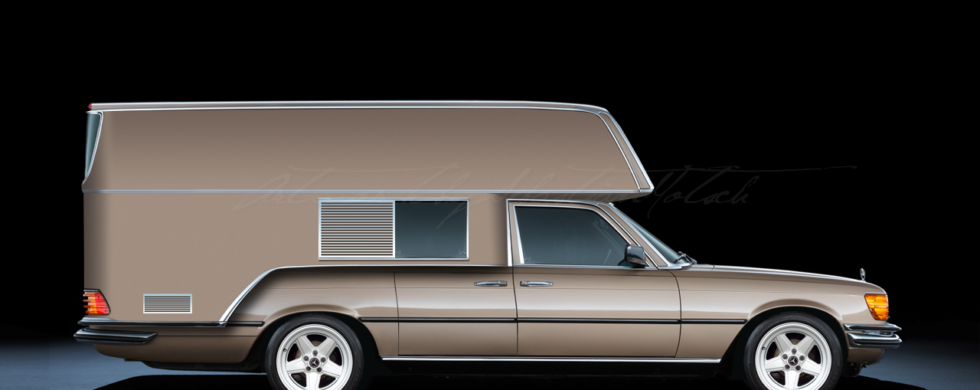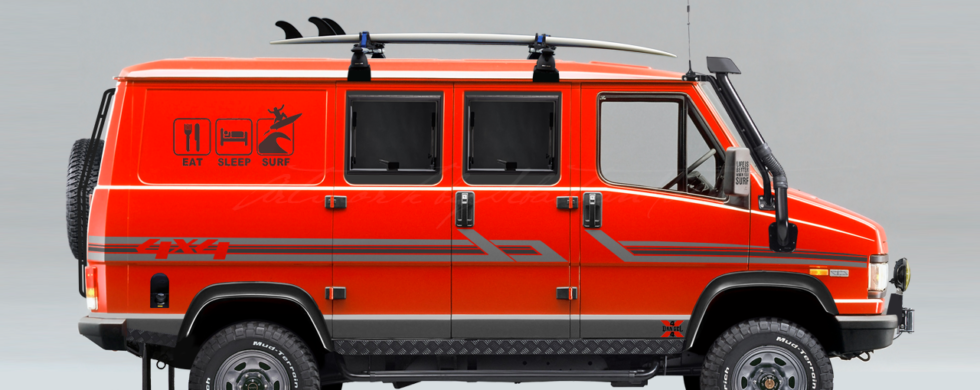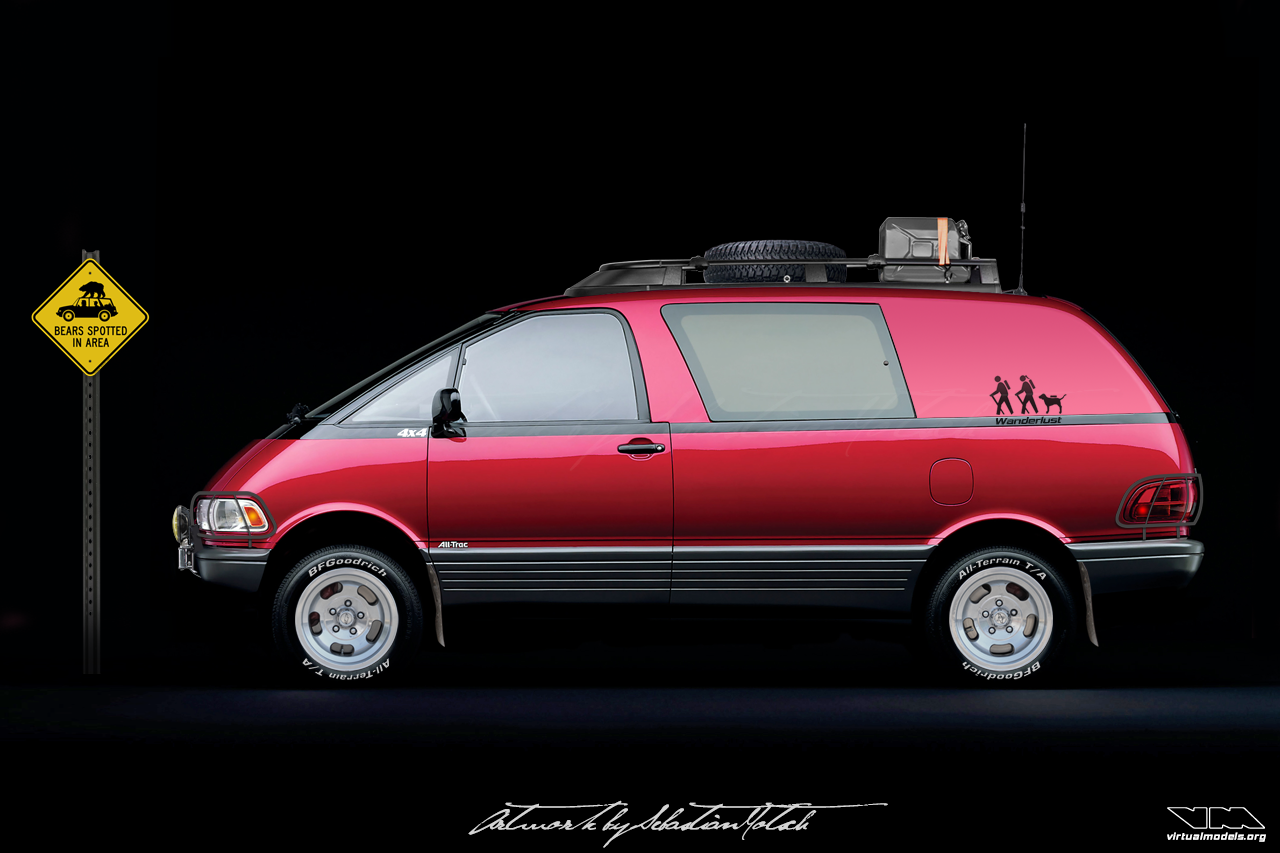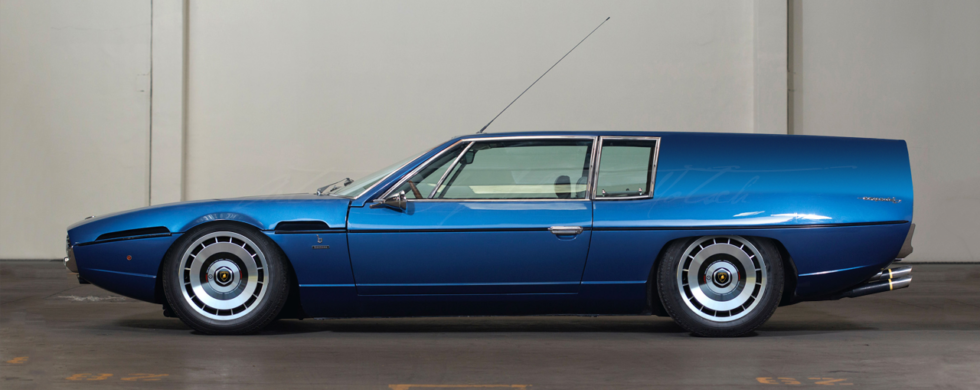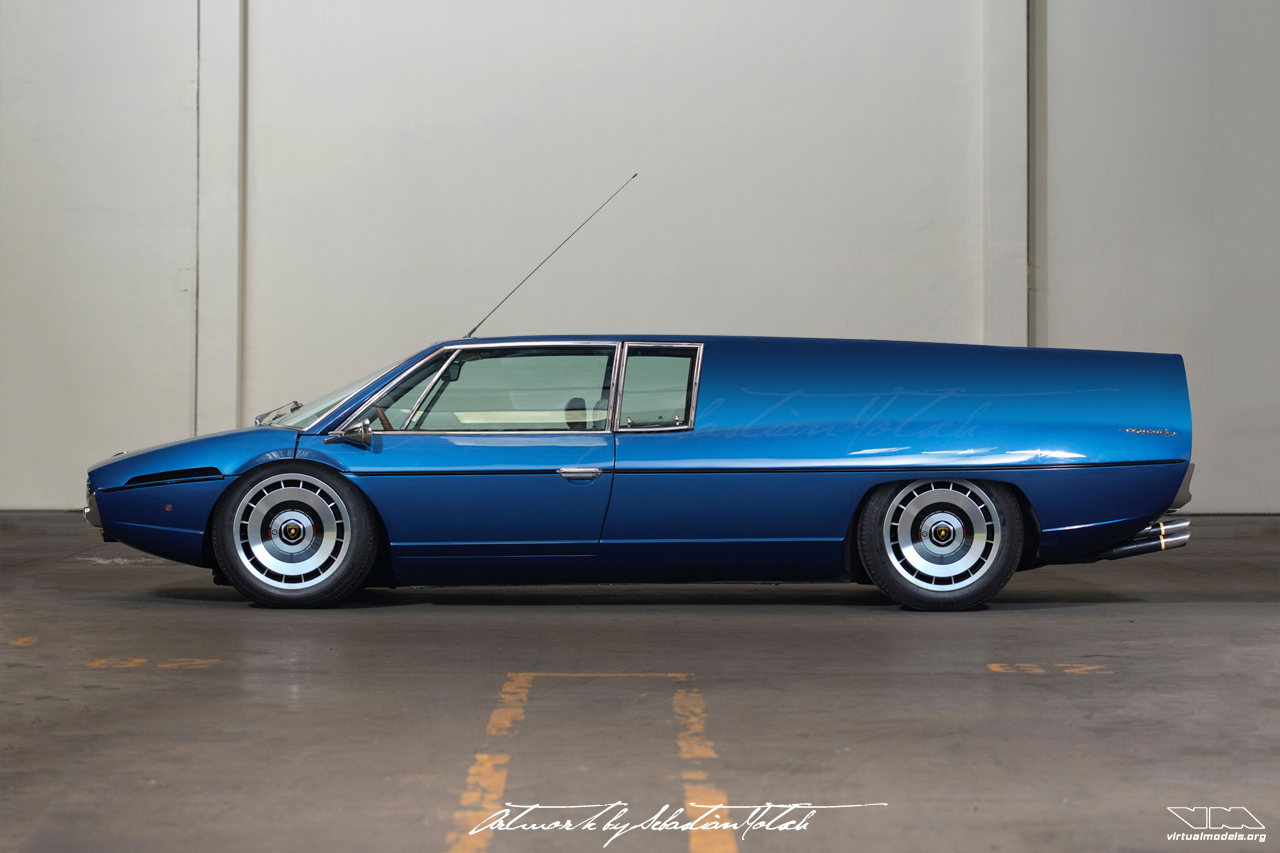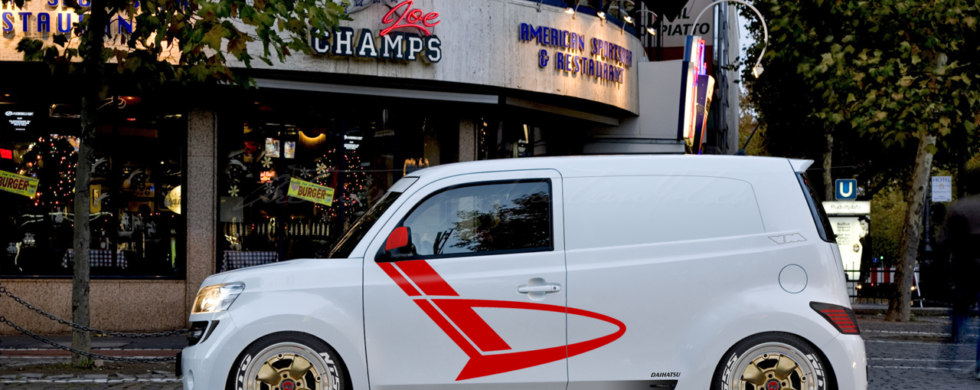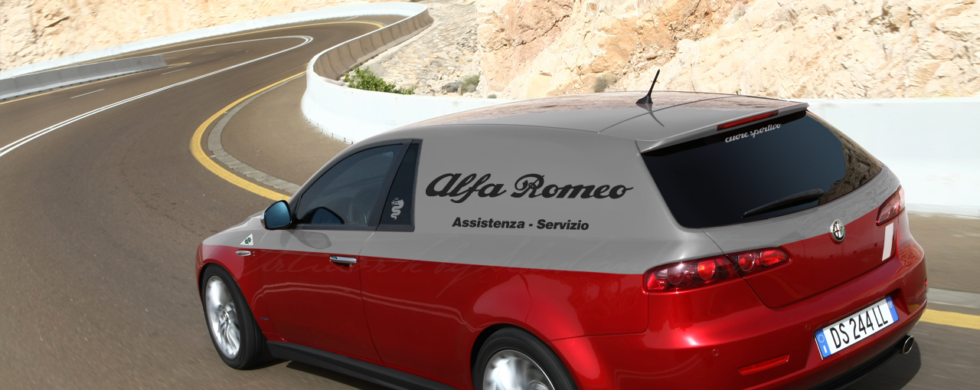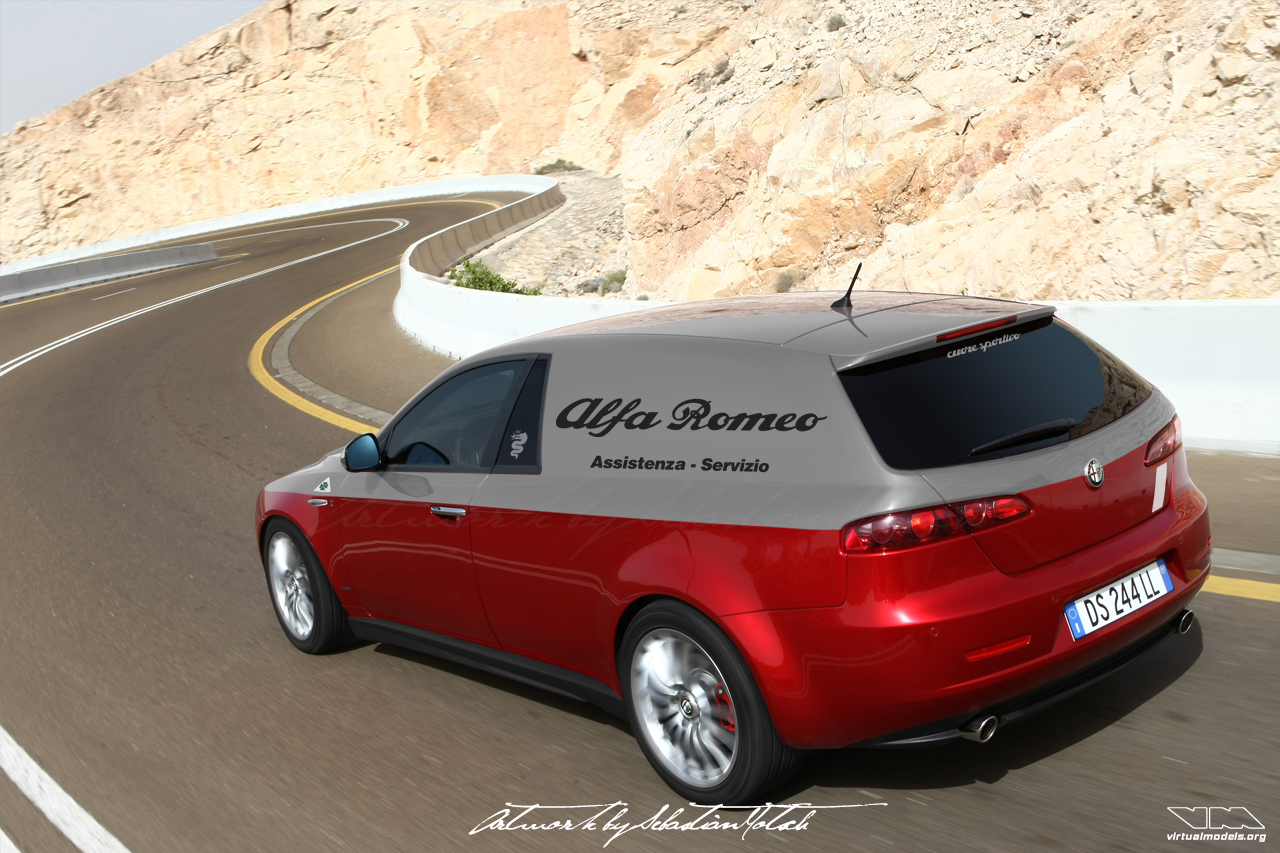22
Some of you might remember the Bischoffberger camper conversion or the SAAB Toppola campers from the 1980’s . Brilliant ideas, but all of them somehow lacking style, because they are cursed with odd proportions. I thought it must be possible to create such an integrated camper based on a passenger car chassis, but with more pleasing and elegant proportions. Many tries and many fails later I came up with this rather luxurious camper conversion. It is based on the Mercedes-Benz W116, has a pop-up roof and may be built in various configurations. The standard version features a semi-integrated camper body which ties nicely into the overall design with matching chrome trim. Access to storage compartments left and right is possible via the converted rear doors, which now open like suicide doors and feature central locking.
The roof raises by the push of a button and once fully extended provides ample headroom in the living quarters. A second set of windows appears and floods the interior with daylight. All windows are equipped with chrome plated sliding blinds. Not visible in the pictures are the glass windows in the roof. They open by operating regular Mercedes-Benz sunroof switches.
For customers who wish to drive on roads less traveled or off-road, the vehicle could be converted to four wheel drive. In this case, a Mercedes-Benz G Geländewagen donates the frame, running gear and axles. Full 4×4 capability with three differential locks and a snorkel for fording rivers should take you to the most remote campsites. Or all around the world, should you fancy an extended getaway.
People with children, or a general need for more space to carry their gear, might want to consider a long wheelbase (LWB) version or an extended version with three axles.
15
“Eat. Sleep. Surf.”
Great idea, but before embarking on an adventure and just doing what the sticker says, you have to build a go-anywhere vehicle that will take you even to the most remote of beaches. Let’s suppose your funds are limited and you have to make do with whatever base vehicle you find in your area. If it happens to be a FIAT Ducato Mk1 or Peugeot J5 with Dangel 4×4, you’re a lucky chap. Provided the rust has not eliminated most of the metal, it is a fairly good base to start with. Build a lift-kit, add overfenders, source some nice wheels and appropriate BF Goodrich rubber, build a camper interior that suits your needs, load up the surfboard and drive to the beach. Should you have forgotten to stop at the supermarket, it’s just surfing and sleeping for you and you’ll have to ask fellow campers for something to eat. 😉
P.S.: The trim-line stickers are losely based on the original stickers of the Ducato 4×4.
15
Vanlife doesn’t only mean living and traveling in a van full-time. Most people actually just use for recreational purposes on the weekends and during their holidays. I found a picture of a 1990’s Toyota Previa All-trac and wondered if it would be possible to create a low-budget vehicle that has the ability to take you off-road to those remote hiking trails. After returning from the trail you could cook a meal, have a cold drink and sleep until the next morning. I removed the rear windows to make insulation easier and create room for storage. A body lift helps to tackle dirt tracks with more clearance and the light guards protect all four corners of the Previa. The bumpers have been shortened to improve approach and departure angles. And if you manage to get stuck, the winch will pull you out of trouble. Old school Wolfrace slot mags give it a that 1970’s vanlife touch and the roof rack provides storage for the spare tire and a couple of gas and water canisters. Add a CB-radio for those areas without cellphone reception and you’re set to go exploring. Happy hiking!
13
The Lamborghini Espada is a vehicle with a very different design approach and reflects the adventurous Seventies very well. Nonetheless it is a beautiful or even sculptural vehicle with stunning details. Believe it or not… this Furgone Veloce version happened by accident. I just wanted to lower the Espada and remodeled the rear wheel arches to fit bigger diameter wheels. It looked horrible with the stock rear window. Consequently I had to design a new window and eventually came up with the idea to convert it to a panel van. Similar to the Citroën CX Tissier shuttling newspapers, it might have been utilized to get the Gazzetta dello Sport to the chiosco quicker.
If the diligent newspaper shuttle driver needed more space, he might have ordered a furgone veloce with even more space for cargo. This would have necessitated extensive drivetrain and frame geometry modifications, of course.
03
The Alfa Romeo 159 Furgone Sportivo pictured here is a follow-up to the Alfasud Furgone Sportivo I created last year. Basically the same idea, executed on a far more modern chassis (Type 939). I found a great picture of a metallic red 159 ti wagon and started, with the finished picture already in my mind. But then… I did the sensible thing got carried away and one idea led to another. From a simple all-red panel van conversion it escalated to a two-tone Alfa Romeo Assistenza & Servizio wagon, inspired by this Giulia Giardinera. To break up the hard contrast at the B-pillar and to lessen the impression of a simple hack-job, I added a small quarter window. This would also help the driver to better see pedestrians and cyclists when turning corners. I would really love to build this in 1:1 scale…

